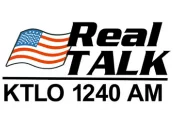A heat stress tracker was being used Aug. 9, 2020, at a junior high school football field in Jacksonville to track the Wet Bulb Globe Temperature. (Photo courtesy of National Weather Service)
High school athletics are underway for some students and will begin soon for others. As outdoor activities and preparations are in progress, student safety during the summer heat can be a concern among athletic programs, and according to officials, the temperature and heat index are not the only things that should be considered.
The National Weather Service reports the Wet Bulb Globe Temperature is being used more often by athletic programs as a safety measure to prevent heat-related illnesses. The Wet Bulb Globe Temperature is derived from ambient temperature and relative humidity, similar to the heat index, but the effects of wind and solar radiation are also considered. It was reportedly created in the 1950s after several heat casualties occurred in the armed forces, especially during military training.
According to the National Weather Service, the values of the Web Bulb Globe Temperature and the heat index and what they mean are not the same. The heat index becomes dangerous at 105 degrees, but the Wet Bulb Globe Temperature is just as unsafe in the upper 80s to around 90 degrees.
Another key difference between the heat index and the Wet Bulb Globe Temperature is the timing of potential life-threatening conditions. Such conditions will usually not materialize until the afternoon with the heat index as temperatures climb above 90 degrees, but critical Wet Bulb Globe Temperature numbers may be realized in the morning if temperatures are in the 80s.
The Arkansas Activities Association has a chart of guidelines it uses to determine student athlete safety in the heat. If the Wet Bulb Globe Temperature is under 82 degrees, normal activities can proceed with separate rest breaks for each hour of practice, and breaks should equal 10 minutes per hour. When it’s between 82 and 86.9, discretion should be used for intense or prolonged exercise, at-risk players should be carefully monitored, and three separate rest breaks should be provided each hour for a four-minute duration in each.
For the range between 87 and 89.9, the maximum length of participation should be two hours. For football, players should be restricted to helmets, shoulder pads and shorts during practice, and protective equipment must be removed for conditioning activities. For all sports, there must be 20 minutes of rest breaks distributes throughout the hour of participation.
When the range is between 90 and 92, the maximum participation length is one hour. No protective equipment may be worn for football players, and no conditioning activities should be conducted. For all sports, there must be 30 minutes of rest breaks distributes throughout the hour.
When the Wet Bulb Globe Temperature goes above 92 degrees, no outdoor workouts should be conducted. Practice should be delayed until a cooler Wet Bulb Globe Temperature is reached.
The Wet Bulb Globe Temperature can be tracked using a heat stress tracker. The Zelus WBGT app is also available on the Apple Store or Google Play Store.
WebReadyTM Powered by WireReady® NSI










